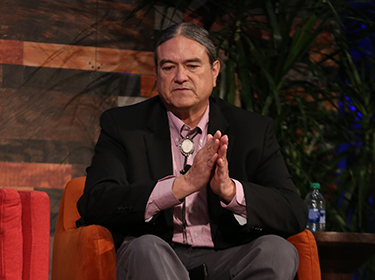In 2021, the second year of the pandemic, the U.S. had the lowest life expectancy of high-income countries. But this did not come as a shock to experts. The U.S. had trailed many peer countries for decades in population longevity.
On Sunday, at the session “Declining U.S. Health: A Population Emergency!” public health experts talked about why mortality and premature deaths have increased in the country and what might be done about it.
At the heart of the problem are health inequities that persist among racial and ethnic groups, the five experts said. This is shown in a recent National Institutes of Health study, revealing that nearly 60% of U.S. counties experienced drops in life expectancy between 2010 and 2019. The findings supported the notion that a major predictor of health is where someone lives.
People of color saw the largest declines in lifespan between 2019 and 2021, the most recent year for which national data are available. Life expectancy for Black people in 2021 was 70.8 years, a decline of four years from 2019, a recent KFF report said. For Hispanics it was 77.7 years, a decline of over four years. Longevity for white people declined 2.4 years to age 76.4.
In 2021, life expectancy for American Indian/Alaska Native people was 65.2 years, a decline of 6.6 years from 2019, KFF said. But in some American Indian communities it is much worse. Donald Warne, co-director of the Center for American Indian Health at the Johns Hopkins Bloomberg School of Public Health, said life expectancy at Pine Ridge reservation in South Dakota is below 50 for men.
Besides COVID-19, recent drivers of lifespan decline have been sharp increases in overdose and suicide, as well as inactivity leading to obesity and lack of or inadequate health care. Type 2 diabetes, once viewed as an adult disease, is now not uncommon among children and adolescents, Warne pointed out.
In a discussion of increases in maternal mortality for Black women, Mary Bassett, director of FXB Center for Health and Human Rights at Harvard University, said it is time to address systemic racism in health care.
“This has to be part of how we think about our current health today,” Bassett said.
Another problem in health care is the privatization of providers in recent decades, leading to their valuing profit over care, she said. Bassett struck a hopeful tone on finding common ground among people suspicious of public health, saying all people want to be healthy. That common sense aspiration can be a foundation to build upon.
Sandro Galea, dean of Boston University’s School of Public Health, said Americans often think health care will improve if “they get a better doctor or hospital.” But the problem is actually political — bad policymaking and oversight has allowed providers to put profits before health and not acknowledge inequities.
Better public health policymaking is needed at all levels of government, but compromise is necessary given the political divisiveness in the U.S. on these issues, he said.
“Public health is an aspiration rather than a profession,” Galea said. “We aspire for the best of health. How do we get there? It is on us to find the place in the middle, but we have a hard time finding that.”
Photo: Donald Warne. Photo courtesy EZ Event Photography.